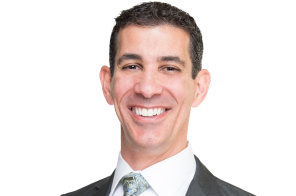A Challenging Landscape
Health systems are under increasing pressure to deliver patient-first care. The pandemic, changing consumer preferences, and disruption by retail and virtual clinics have all underscored the cracks in our facility-based care models. To compete going forward, health systems must deliver care on patients’ terms—how, when, and where they want it.
In facing these challenges, health systems rely heavily on collaborating with their physicians to innovate solutions that meet the health needs of their communities. However, medicine is embroiled in its own burnout crisis, with a record number of providers at all levels reporting at least one manifestation of burnout—including decreased engagement. This begs the question: How can our industry most effectively nurture and retain the front-line expertise necessary to bring ingenious problem-solving to today’s greatest care delivery challenges?
Ownership Supports Patient-Centered Care
Historically, healthcare organizations have been risk-averse and slow to adapt. While physicians are in a much better position to innovate, in many of the profit-driven sectors of our industry, they’re too often constrained by cultural inertia and financial pressures, plus the demanding pace and emotional intensity of care delivery.
Provider groups owned and led by physicians have distinct advantages in today’s environment regarding solving industry challenges and nurturing a resilient clinical workforce. Groups with this model cover a wide spectrum, from wholly owned physician partnerships with a high degree of autonomy to mixed models partially backed by outside investors. Likewise, physician-owned groups can range in size from solo practitioners to large national practices with thousands of partners.
Overall, physician-owned groups experience fewer profit pressures, which allows them to keep the patient at the center of decision-making. They operate in aligned ecosystems where what’s best for patients ultimately will also benefit physicians and the health system as a whole. And they typically have programs in place that directly promote provider wellness and deliver resources to alleviate burnout. This allows a patient-first focus to drive everything they do, from continually seeking improvements in care delivery to developing and implementing care innovations.
Providers burn out faster when they feel their voices aren’t heard and that their input doesn’t matter in making decisions about care delivery. Including them in engaged conversations around new solutions is an essential tool in combatting burnout, and their involvement is critical in developing solutions to solve problems they see daily.























